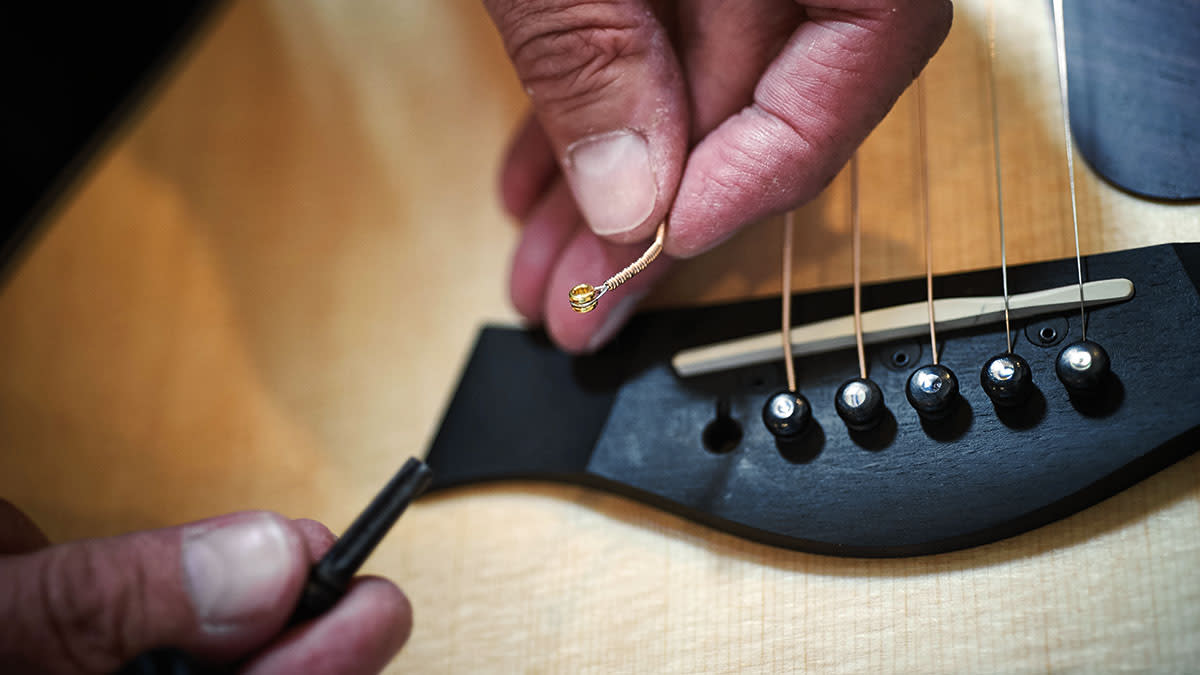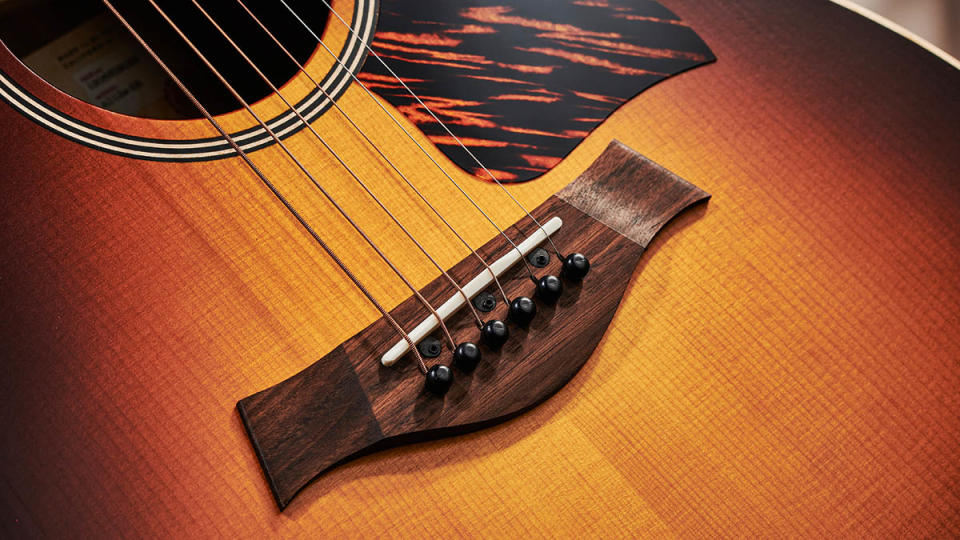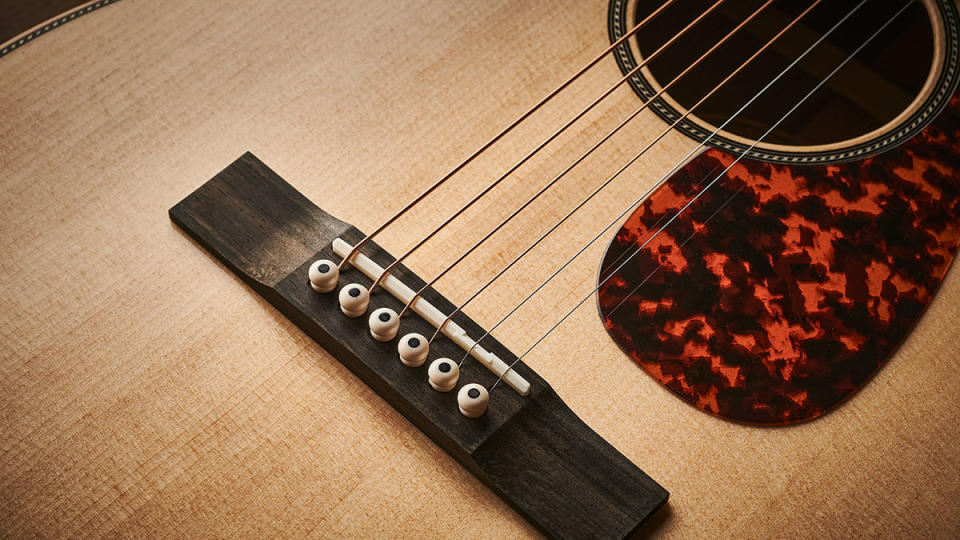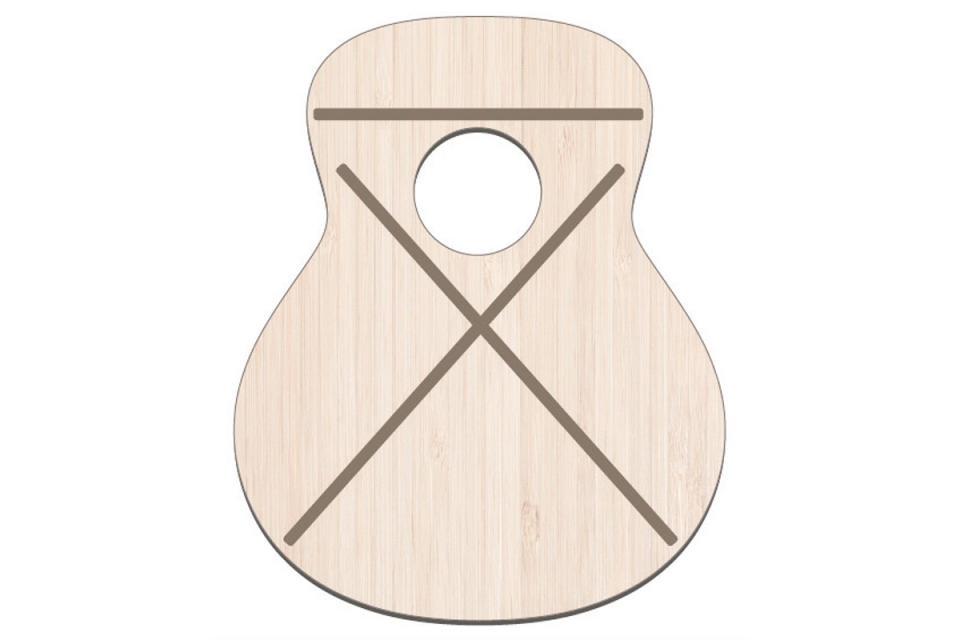5 ways to improve your acoustic guitar tone

Are you unhappy with your acoustic tone? We’ve all been there. But before you jettison your acoustic guitar and start succession planning, there might be something you can do to improve its tone and reconnect with the instrument.
We’re here to walk through a handful of ways you can get more out your acoustic. More tone, more inspiration, or so the logic goes.
A few of these are mods or maintenance steps you can take yourself. One, well, we’d advice you find a good tech for. And finally there is one tip that none of us can escape from.
1. Bridge pins

Acoustic guitars sound their best when the ball-ends of the strings are firmly anchored under the bridge plate. To achieve that, there must be a friction fit between the pins and the tapered pin holes in the bridge.
With prolonged use, bridge pins become loose and at that point a new set of bridge pins may be necessary. Options include plastic, Tusq, bone, horn, wood and brass. All have different characteristics that may subtly modify and enhance tone, but the fit is paramount.
2. Saddle swap

Saddles transmit string vibration into the top to set it in motion, so they’re key to tone. The two important things to consider are the material and the fit. Most high-end acoustics come with bone saddles, which have excellent tonal characteristics.
Cheaper guitars often have plastic or synthetic saddles, so an upgrade to bone or Tusq can be worthwhile. The bottom of the saddle should make perfect contact with the saddle slot and fit snugly to remain perfectly upright.
3. Brace Shaving

Mass-production acoustics do not have individually voiced tops. If you have a solid wood acoustic that feels stiff and unresponsive, it’s possible to get inside with a finger plane and carve the X-braces to free up the tone.
Rear braces can also be finessed. Some of those solid-wood Chinese acoustics can be massively improved by this procedure, but this kind of work is always best left to a professional.
4. String swap
Changing acoustic guitar strings is like swapping pickups on an electric. Even if you have always preferred bronze strings, you might find that phosphor bronze actually sounds better on a particular guitar, or vice-versa.
Prior to the 1970s, acoustic players used Monel alloy strings, so for old-school tone check out Martin Retro strings. It’s also worth considering round‑core rather than hex-core, and remember that gauge affects tone as well as playability.
5. Time to practice!

We’ve left this one until last, but have you ever considered how much better your playing might be if all that time you’ve spent watching amp, pedal, pickup and guitar demos had been used for practising instead?
Maybe that $300 you’re about to splash on yet another set of underwhelming PAF replicas or that currently fashionable Tube Screamer clone might be better spent on getting some lessons. If pushed, most of us will admit that the ability to play fluently tends to enhance tone, so get better and you’ll almost certainly sound better, too.
The root of all really good tone is good playing technique. Practice might be the best investment you ever make in tone…

